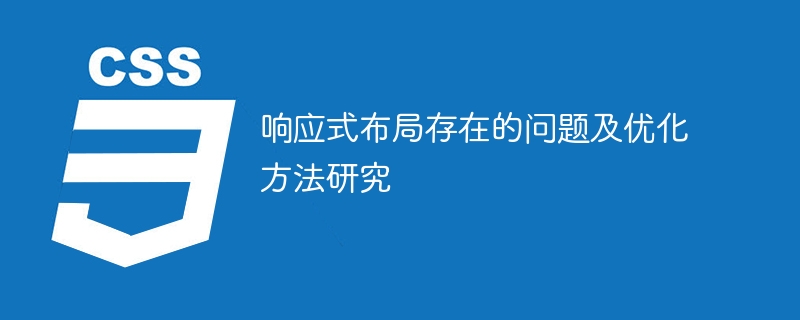Home >Web Front-end >CSS Tutorial >Study the issues and optimization methods of responsive layout
Study the issues and optimization methods of responsive layout
- WBOYWBOYWBOYWBOYWBOYWBOYWBOYWBOYWBOYWBOYWBOYWBOYWBOriginal
- 2024-02-18 15:41:06947browse

Research on problems and optimization methods of responsive layout
With the rapid development of the mobile Internet, more and more people use mobile devices to browse the web. In order for the website to provide a good user experience on different devices, responsive layout has become one of the standards of modern web design. However, there are still some problems in responsive layout in practice. This article will discuss these problems and propose some optimization methods.
First of all, for larger-scale websites, responsive layout may cause the page to load slower. In a page, more HTML, CSS and JavaScript codes may need to be loaded to adapt to different devices, which will increase the page loading time and affect the user experience. To solve this problem, consider using technologies such as adaptive images, lazy loading, and resource compression to reduce page loading time.
Secondly, responsive layout may lead to poor user experience. In a page, some elements may need to be partially hidden to fit on smaller screens, which will prevent some features from displaying properly. In order to optimize the user experience, you can consider designing a specific mobile version of the web page to provide a smoother and more convenient operating experience.
In addition, responsive layout may cause design limitations. In a single page, there is a need to consider adapting to various screen sizes and devices, which can limit a designer's creativity and expressiveness. To overcome this limitation, designers can consider using responsive layouts in conjunction with custom media queries to achieve more flexible and diverse design effects.
In addition, responsive layout also faces browser compatibility issues. Different browsers may have different support for CSS and JavaScript, which may cause the page to display abnormally on some browsers. To solve this problem, modern CSS3 and HTML5 technologies can be used, as well as some compatibility tools and libraries to achieve cross-browser compatibility.
To sum up, responsive layout does have some problems in practice, but by using appropriate optimization methods, these problems can be solved. At the same time, responsive layout also has many advantages, such as saving time and cost, improving the maintainability of the website, etc. Therefore, when designing and developing websites, we should comprehensively consider the issues and advantages of responsive layout and choose appropriate strategies to achieve website adaptation and optimization.
The above is the detailed content of Study the issues and optimization methods of responsive layout. For more information, please follow other related articles on the PHP Chinese website!

